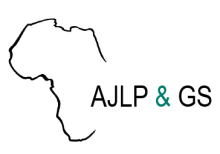Resource information
Different government institutions in Ethiopia working on land related issues tackle and manage data and information independently, while their activities and mandates are often related or even overlapping. Ministry of Agriculture (MoA) deals with small holder rural land and until recently the Ethiopian Horticulture and Agricultural Investment Authority (EHAIA) was dealing with commercial agricultural land. Those institutions have not been able to share information each other’s data to make informed decisions. The lack shared data has in some cases led to investment land allocations that overlap with small holder farmers’ areas or national protected areas. This challenge is currently being addressed by joint initiatives involving MoA supported by the Finnish Government funded REILA project and by the EU and Germany (BMZ) co-financed “Support to Responsible Agricultural Investment” (S2RAI) project.MoA with support of REILA has developed the National Rural Land Administration Information System (NRLAIS), which includes transaction processes and cadaster of individual land user rights. NRLAIS is the key system in the development of an integrated harmonized land administration and it works as a core foundation for other land management systems. It provides functionalities to manage land administration datasets and administrative services. EHAIA, on the other hand, with support of S2RAI, has developed the Commercial Agriculture Management Information System (CAMIS), an IT-system to manage state land allocated for commercial agricultural investment. In order to allow smooth data exchange, CAMIS is based on the same open source technologies as NRLAIS. Furthermore, CAMIS land administration functions are linked to core land administration functions of NRLAIS, which enables CAMIS to carry out all necessary transactions on investment land through the NRLAIS system. The underlying objective of CAMIS is to collect and store data on agricultural investments and serve as a tool for monitoring the performance of investment projects.Then herewith proposed paper will provide examples of benefits and arguments for linking data and IT-systems. The paper will focus on the link between the investment land allocation and monitoring (CAMIS) and rural cadaster (NRLAIS), but it will also introduce plans to expand the use of the systems for other land management functions in Ethiopia.


